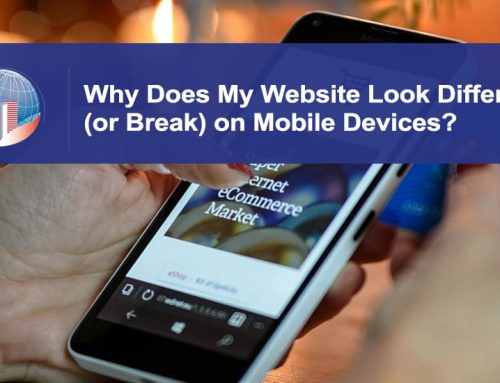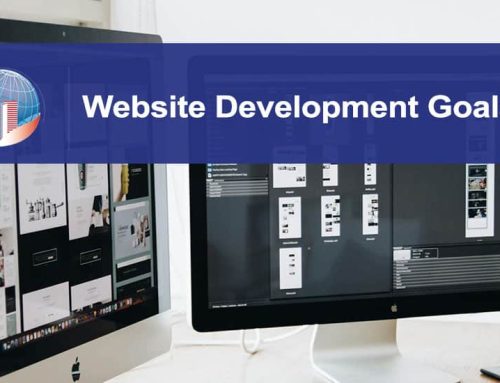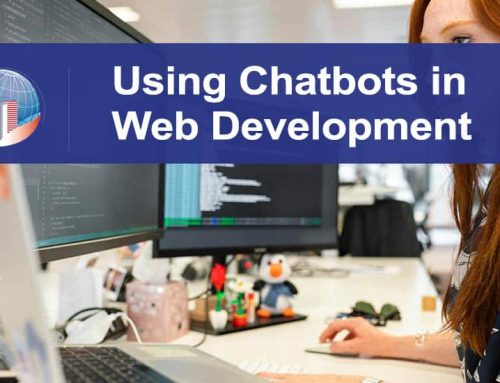
Creating an accessible and inclusive website is no longer optional but necessary. An inclusive website ensures all users, including those with disabilities, can navigate, interact, and engage with your content effectively. Salterra, a leader in web development, emphasizes building websites that meet accessibility requirements while providing an exceptional user experience.
This guide outlines best practices for accessible and inclusive web development, helping you cater to a diverse audience while complying with legal standards.
Why Accessibility Matters in Website Development
Accessible websites remove barriers for users with disabilities, including visual, auditory, physical, or cognitive impairments. These practices are important for several reasons, including:
Legal Compliance:
In many regions, laws such as the Americans with Disabilities Act (ADA) in the United States mandate businesses to ensure their websites meet specific accessibility requirements. These laws are designed to provide equal access to digital spaces for individuals with disabilities. Failure to comply risks legal penalties, including hefty fines and lawsuits, and can harm a business’s reputation. For instance, companies like Domino’s Pizza have faced legal action for non-compliance. By working with a team offering top web development near Tucson, AZ, businesses can ensure their websites meet all necessary accessibility standards while delivering a seamless user experience. Choosing experts like Salterra also ensures that your site remains compliant as regulations evolve, protecting your brand and reputation in the long term.
Expanded Reach
With over 1 billion people globally living with some form of disability, creating an inclusive website opens the door to an often-overlooked demographic. Inclusive websites accommodate individuals with varying needs, including visual, auditory, motor, and cognitive impairments. This expanded reach demonstrates social responsibility and creates increased traffic, customer loyalty, and revenue opportunities. By prioritizing inclusivity, you position your brand as welcoming and considerate, enhancing its overall appeal.
Improved User Experience
Accessibility and usability go hand in hand, benefiting not just individuals with disabilities but all users. Features like intuitive navigation, optimized layouts, and clear labeling ensure seamless interaction across the board. For instance, captions for video content not only assist users with hearing impairments but also cater to individuals in noisy environments. By addressing accessibility, you naturally enhance usability, providing a smoother and more satisfying experience for everyone. Salterra specializes in balancing these elements to ensure websites are easy to navigate and engage with.
SEO Benefits
Search engines prioritize websites with accessible designs, aiming to deliver the best user experience to their audience. Accessible features like semantic HTML, alternative text for images, and proper heading structures make it easier for search engines to index and rank your site. Additionally, improved site performance, such as faster loading speeds and mobile responsiveness, further boosts SEO rankings. By investing in accessibility, you cater to a wider audience and improve your website’s visibility, making it easier for potential customers to find you.
What Are the 4 Principles of Web Accessibility?
The Web Content Accessibility Guidelines (WCAG) outline four core principles for accessibility, often referred to as POUR:
- Perceivable: Content must be presented in ways users can perceive, such as alternative text for images and captions for videos.
- Operable: Navigation and functionality must be easy to operate using a keyboard, screen reader, or adaptive device.
- Understandable: Content should be easy to read and comprehend, avoiding complex jargon and ensuring consistent navigation.
- Robust: Websites must be compatible with current and future technologies, including assistive devices.
Salterra integrates these principles into every project, ensuring an inclusive website development process that caters to all users.
Best Practices for Accessible and Inclusive Web Development
1. Evaluate & Improve Website Accessibility
Regular audits should be conducted using tools like WAVE or Axe to identify accessibility gaps. This ensures your website meets the latest website accessibility requirements.
Key steps include:
- Checking for missing alt text on images.
- Ensuring color contrast ratios meet WCAG standards.
- Testing navigation with a keyboard or screen reader.
2. Focus on Perceivable Design
Make sure your website’s content is easy to perceive.
- Text Alternatives: Provide descriptive alt text for all images and graphics.
- Color Contrast: Use high contrast between text and background for readability.
- Multimedia Accessibility: Add captions or transcripts for videos and audio content.
3. Accessible Navigation
Navigation is a key component of inclusive website development. Ensure:
- Keyboard Accessibility: All website elements can be accessed without a mouse.
- Consistent Layouts: Use predictable patterns for menus, buttons, and links.
- Skip Links: Users can bypass repetitive navigation elements and jump directly to the content.
4. Understand Accessibility and Usability Difference
While usability focuses on user experience, accessibility emphasizes making a site functional for individuals with disabilities. An accessible website may include features like screen reader compatibility, while usability ensures the site is intuitive for everyone. Combining these ensures a seamless experience for all visitors.
5. Write Inclusive Content
Accessible content is critical for readability.
- Use simple, clear language to communicate effectively.
- Avoid reliance on directional language, such as “click the button on the right.”
- Break up long paragraphs with headings and bullet points for better comprehension.
6. Ensure Mobile Accessibility
As mobile browsing increases, ensure your site is mobile-friendly.
- Use responsive design to adapt layouts for different screen sizes.
- Test mobile navigation using assistive technologies.
The Role of Technology in Inclusive Website Development
Assistive Technology Compatibility
Inclusive websites must work with assistive technologies, such as:
- Screen Readers: Enable visually impaired users to hear content descriptions.
- Switch Devices: Allow users with limited mobility to navigate using adaptive switches.
- Voice Command Tools: Recognize spoken instructions to navigate the site.
Salterra’s Approach to Inclusive Website Development
At Salterra, we are committed to creating websites for health and medical specialists, businesses, and organizations prioritizing inclusivity. Our approach includes:
- Comprehensive Accessibility Audits: Identifying gaps and implementing fixes.
- Custom Solutions: Tailored designs that align with your brand and audience needs.
- Cutting-Edge Technologies: Using the latest tools and frameworks for optimized performance.
Examples of Inclusive Features in Modern Websites
- Text-to-Speech Functionality: Allows users to listen to written content.
- Adjustable Font Sizes: Improves readability for users with visual impairments.
- Accessible Forms: Includes clear labels, error notifications, and CAPTCHA alternatives.
Evaluating Your Website for Accessibility
To ensure compliance and usability, regularly assess your site’s accessibility. Ask questions such as:
- Can users navigate without a mouse?
- Do text alternatives accompany all images and multimedia elements?
- Is the content structured for easy understanding?
For expert guidance, Salterra specializes in evaluating & improving website accessibility for businesses of all sizes.
Benefits of Inclusive Website Development
Enhanced Reputation
Prioritizing inclusivity reflects your organization’s commitment to equality and social responsibility, which resonates with customers, employees, and stakeholders. An accessible website demonstrates that your business values all users, regardless of their abilities, creating a positive brand image. Companies that lead with inclusivity often attract more loyalty and trust, as consumers increasingly prefer brands aligned with ethical practices. By implementing accessible web design with experts like Salterra, your business can become a forward-thinking and socially responsible entity.
Broader Audience
Inclusive websites cater to a larger user base by accommodating those who rely on assistive technologies such as screen readers, voice recognition software, and keyboard navigation. This includes users with visual, auditory, motor, or cognitive impairments. Additionally, features like captions, high-contrast modes, and simple navigation benefit not only users with disabilities but also aging populations and those in unique environments, such as bright outdoor settings or quiet spaces. Ensuring accessibility, your business extends its reach to a diverse audience, increasing engagement and opportunities to convert new customers.
Increased Engagement
Accessible websites are inherently easier to navigate and interact with, improving the overall user experience for everyone. Features such as logical structure, readable fonts, and clear calls-to-action make it effortless for users to find information and complete tasks. This leads to higher retention rates, lower bounce rates, and greater user satisfaction. For example, accessible design often improves page load speeds and mobile responsiveness, boosting engagement metrics. By focusing on accessibility, businesses can foster meaningful interactions and encourage repeat visits, ultimately enhancing their digital presence and performance.
Integrating JavaScript for Inclusivity in Web Development
JavaScript is crucial in creating accessible and inclusive web experiences by enabling dynamic and interactive features that cater to diverse user needs. For example, developers can use JavaScript to create accessible dropdown menus and modals and to form validation compatible with assistive technologies like screen readers. By ensuring that these elements follow ARIA (Accessible Rich Internet Applications) guidelines, JavaScript can bridge gaps between usability and accessibility. Moreover, JavaScript enhances the usability of websites for users with disabilities. Implementing best practices in JavaScript ensures compliance with accessibility standards, promoting inclusivity without compromising functionality.
Partner with Salterra for Accessible Web Development
By partnering with Salterra, you’ll work with a team that understands the importance of inclusivity in digital spaces. Our solutions go beyond meeting accessibility standards—we create experiences that welcome every user. Whether you need to evaluate & improve website accessibility or start from scratch, we’re here to help.
Contact Salterra today at (520) 214-3729 to learn how inclusive website development can benefit your business!
FAQs About Web Development
Why Trust Salterra
Salterra Web Design is a premier Tucson web design agency dedicated to helping local businesses thrive online. Since 2011, we have specialized in creating stunning, user-friendly websites for small—to medium-sized businesses in Tucson, Arizona. Our team of experienced web developers, graphic designers, and digital marketing professionals works together to provide comprehensive digital solutions tailored to your business needs.
At Salterra, we offer a wide range of services designed to enhance your online presence and drive business growth:
- Web Design and Development: We create beautiful, responsive websites that look great and provide a seamless user experience across all devices. Our designs are tailored to reflect your brand identity and meet your business goals.
- Search Engine Optimization (SEO): Our expert SEO services ensure your website is easily found by potential customers. We use advanced techniques to improve your search engine rankings, increase organic traffic, and boost your online visibility.
- Digital Marketing: From social media management to pay-per-click (PPC) advertising, our digital marketing strategies are designed to engage your audience and convert visitors into loyal customers. We focus on creating targeted campaigns that deliver measurable results.
- Content Marketing: Our team produces high-quality, engaging content that resonates with your audience and enhances your brand’s online presence. We help you build authority and trust through valuable and informative content.
- Website Hosting and Maintenance: We provide reliable hosting solutions and ongoing website maintenance to ensure your site remains secure, up-to-date, and performs at its best.
As a family-owned business, we offer personalized service and build long-term client relationships. Our commitment to quality work and fair pricing has earned us a solid reputation in the Tucson community. We understand local businesses’ unique challenges and are passionate about helping them succeed in the digital world.
If you are looking for a trusted partner to elevate your online presence, look no further than Salterra Web Design. Contact us today to learn how we can help your Tucson business grow with our expert web design and digital marketing services.
Contact Information:
Email: info.salterra@gmail.com
Phone: (520) 214-3729
Location: Tucson, AZ
Salterra operates in Arizona, with a strong presence in key regions such as Tucson, Tempe, Phoenix, and Chandler.
Our Locations
Web Design in Casa Adobes | Web Design in Catalina Foothills | Web Design in Marana | Web Design in Oro Valley | Web Design in Drexel Heights
Web Design Sahuarita | Web Design South Tucson | Web Design Green Valley | Web Design Vail




